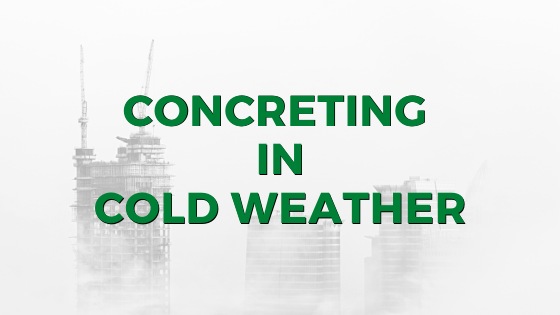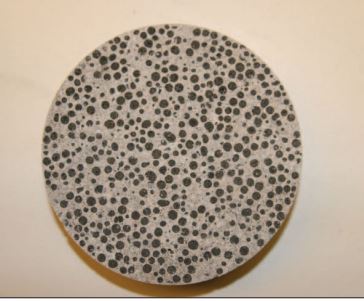
Have you ever wondered how concreting operations are performed in cold weather? Is there any difference in concreting in normal and cold weather conditions?
Definition of Cold Weather Concreting
As per IS Code 7841-2, Any concreting operation done at about 5°C atmospheric temperature or below is termed as cold weather concreting.
Effect of cold weather on concrete
Concrete gains its strength due to the hydration of cement. The hydration of cement is a temperature-dependent phenomenon. At high temperatures, the rate of hydration is higher and lower at low temperatures.
It has been found that hydration of cement occurs even at low temperatures down to around -10 degree celsius.
What happens when the water in fresh concrete freezes?
The concrete behaves similar to the saturated soil subject to heaving. The freezing of mixing water causes an increase in the total volume of the concrete.
Since the hydration of cement can not take place in absence of water, the setting and hardening of fresh concrete will be delayed because no water is available for chemical reactions.
Later, when thawing takes place, the concrete should be revibrated. Then, the concrete will set without any loss of strength.
If we do not revibrate the concrete, it will set with large pores inside the side. This will significantly reduce the strength of concrete.
Even though the vibration of concrete on thawing produces sound concrete, such procedure is not recommended and should be adopted only when unavoidable.
If freezing takes place after the concrete has set but has not developed the required strength, the expansion of water will cause cracking. The strength of such concrete will be very low.
If the concrete has developed sufficient strength, it will resist the freezing temperature without any damage. Since large parts of water will have combined with cement or located in very small pores, it would not freeze.
Concreting in Cold Weather
For the cold weather conditions prevailing in India, a satisfactory concrete can be produced mainly by conserving the heat of hydration of cement with insulations of the concrete surface and formworks.
In conditions, when alternate freezing and thawing during service is anticipated, air entrainment of concrete is necessary. The compressive strength of such air-entrained concrete at 28 days should not be less than 90 per cent of a reference mix without air entrainment
In cold weather conditions, normal-weight concrete should not be placed because of its high thermal conductivity. Lightweight concrete which has a lower thermal conductivity should be preferred. In lightweight aggregate concrete, the hydration of cement will effectively prevent the water from freezing.
Type of Cement and Admixtures
Use of cement which gives earlier and higher heat of hydration is prefered.
The rapid hardening cement or cement with a high rate of the heat of development i.e. having high C3S and C3A contents and rich mixes with the low water-cement ratio is advantageous in cold weather.
Accelerating admixtures can be used to increase the rate of setting of concrete. The chlorides cause corrosion of steel and should be avoided if the steel is present in concrete. It should also be avoided when sulphate resisting concrete is required.
Heating of Mixing Ingredients
To achieve the required temperature in cold weather, the mixing ingredients can be heated.
Water can be heated easily but its temperature should not exceed 60 to 80-degree celsius. The hot water causes a flash setting of concrete. We should prevent the cement from coming into contact with hot water. So the order of feeding the mix ingredients into the mixer should be arranged.
If heating the water does not sufficiently raise the temperature of concrete, the aggregates should also be heated. Heating of aggregate above 52 degree celsius is not recommended.
The temperature of the mix ingredients must be controlled. The temperature of resulting concrete should be calculated in advance by the formula given in IS CODE.
The objective of controlling temperature of resulting concrete is to ensure that
- The temperature of concrete is high enough to prevent freezing and
- The setting does not occur at too high temperature.
High temperature adversely affects the strength, workability and may lead to thermal contraction.
Placement of Concrete in Cold Weather
The concrete should not be placed at frozen ground. If possible, the formwork should also be heated.
After Placement, the concrete must be protected from freezing for its Pre Hardening Period.
The pre hardening period is the time for which the temperature of freshly placed concrete is required to be maintained above the freezing point.
There are various types of insulation for concrete placed in cold weathers. The insulation should be removed in such a manner as to avoid a sudden change in temperature at the surface.
An Alternative Solution
An alternate solution is to decrease the freezing point of the mixing water well below 0-degree Celsius by using anti-freezing admixtures such as Potassium carbonate (Potash), calcium nitrate and sodium nitrite, etc.

